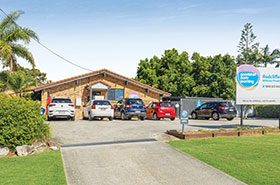This article is from the Australian Property Journal archive
THE prospect of a 14th interest rate hike is well and truly in the frame on the back of yesterday’s higher-than-expected inflation numbers, which piled more pressure on construction capacity on the eve of national cabinet’s ambitious housing programs.
Australian Bureau of Statistics data yesterday showed headline inflation rose to 4.0% in the year to May, up from April’s 3.6%, and above economist’s expectations of 3.8%.
Core inflation, or the trimmed mean measure of inflation, lifted from 4.1% to 4.4%.
Rent inflation remained at a high 7.5% as the rental market continued to see vacancies hover around historic lows amid a severe mismatch between supply and demand. The cost of new dwelling purchases was 4.9% higher.
The RBA is expecting quarterly inflation to lift from 3.6% in the March quarter to 3.8% in the June quarter. That data will be released on 31st July, ahead of the RBA’s August interest rate meeting.
The central bank’s target range is between 2% and 3%. Inflation peaked at 8.4% in December of 2022. RBA governor Michele Bullock last month warned of a “bumpy” road ahead in the battle to bring inflation back to the target range.
Canstar and UBS are now predicting a rate hike in August, by 25 basis points to 4.60%, aligning with Morgan Stanley and Deutsche Bank.
Canstar group executive, financial services, Steve Mickenbecker said, “With scant evidence that inflation is moving towards the target band, the Reserve Bank will feel uncomfortable waiting a further three months for the following release of quarterly CPI, and will surely lift rates in August. The risk of baked-in inflationary expectations is too high.”
ANZ senior economist Catherine Birch said the fresh data “may make the RBA a little nervous” as it increases the risk that June quarter CPI will overshoot the RBA’s forecasts of 3.8% year-on-year for both headline and trimmed mean inflation.
“If this occurred alongside upward revisions to the RBA’s expectations for activity and labour market data, the RBA could lift the cash rate, although a rate hike is not our base case,” she said.
Among the major lenders, NAB pushed out its rate cut expectations by six months to May 2025, following ANZ’s move a fortnight ago. CBA and Westpac have so far held their forecast for November cut.
Birch said it is possible that Australia is experiencing a “temporary stalling in the disinflation process, similar to what the US went through early this year”, noting that disinflation looks to have resumed in the US in April and May.
Treasurer Jim Chalmers told reporters yesterday, “We’ve seen around the world that inflation can zig and zag on its way down, it doesn’t always moderate in a straight line and the last mile can be a bit harder”.
Shadow Treasurer Angus Taylor said, “This is what happens when you have a big spending Labor government that’s completely out of touch with the economic reality”.
RateCity.com.au research director, Sally Tindall, said the “wait-and-see approach” has suited the RBA up until now, “however, the reality is, after five consecutive meetings on hold, the board is running out of runway to keep going in this holding pattern.”
“The board is likely to have wanted to take the time to see how the extra cash from the stage three tax cuts and the electricity rebate had on household consumption, but with the clock ticking in the background it could well speed up any decision to hike.
She said the stage three tax cuts might add to the case for a cash rate hike, but they’ll also serve as a lifeline for many borrowers if another one eventuates.
Inflation a “capacity killer”
Master Builders Australia CEO, Denita Wawn said inflation is a “capacity killer, making investment more expensive and less attractive”.
“On the ground, we continue to hear projects for new homes, commercial or infrastructure construction simply don’t stack up because it takes too long to build and is too costly.
“If we don’t get inflation under control and urgently start boosting housing supply we are in for a lengthy period of pain and depressed construction activity.”
Housing approvals have already low, putting national cabinet’s ambitious National Housing Accord and Housing Australia Future Fund (HAFF) targets in yet more doubt, and putting little respite on the horizon for the national housing crisis.
Analysis from KPMG shows more than 37,000 dwellings in Australia are in limbo between having being approved and construction kicking off, as building material costs and high interest rates stall projects.




